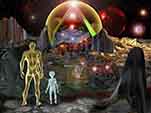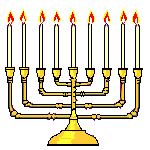When “The Ninth Gate” was released in 1999, critics found the movie pointless. But that’s because they completely missed the point of the movie. Through symbolism, “The Ninth Gate” tells a story of occult initiation while commenting on the elite’s obsession with Satanism. Here’s a look at this much-overlooked movie.
Strange fact: Polanski managed to make this movie happen while still a fugitive from the U.S. justice system for drugging and raping a 13-year-old girl.
By Vigilant Citizen – June 21, 2024
Warning: 25-year-old spoilers ahead!
When The Ninth Gate was first released in 1999, it wasn’t a big commercial success. Critics said the movie “meandered aimlessly” and had a “lackluster ending” that not even Johnny Depp’s star power could save.
At first glance, the critics were correct: The Ninth Gate appears to be about Johnny Depp running around various countries while lighting cigarettes at every opportunity he gets. And after about two hours, the movie ends in a rather anti-climactic way.
But at second glance, these critics completely missed the movie’s point. The Ninth Gate is not a Pirates of the Caribbean-style adventure but a highly symbolic story of initiation where the protagonist’s “meandering” is actually an allegorical ritual, and the “anti-climatic ending” is nothing less than spiritual illumination guided by the Whore of Babylon in the flesh.
However, none of this is spelled out in the movie; it is all meant to be decoded. Indeed, the movie’s underlying meaning can only be understood once the symbols and occult references peppered throughout the film are pieced together, like Corso (Johnny Depp’s character) pieces together pages from a Satanic book.
Maybe that explains why, after being panned by critics, the movie is now considered a cult classic. Here’s a look at the much-overlooked meaning of The Ninth Gate.
A Roman Polanski Movie
Roman Polanski and Johnny Depp are long-time friends.
In 1968, Roman Polanski released Rosemary’s Baby – a psychological horror movie about a newlywed woman who is groomed by a Satanic cult to give birth to the Antichrist (read my full article about it here).
In a way, this seminal film announced the coming of a new era. It was the end of an innocent and idealistic America and the “birth” of an era influenced by powerful occult movements.
Strangely enough, the movie was attached to real-world events that would make its “prophecy” come true. Less than a year after the release of Rosemary’s Baby, Roman Polanski’s pregnant wife, Sharon Tate, was ritualistically murdered by followers of Charles Manson. The series of gruesome murders carried out by the Manson cult (which reeked of MKULTRA involvement) shocked America to the core and snapped it out of its hippie idealism: The world realized that there were dark forces lurking behind the scenes.
Precisely 30 years after these events – and at the dawn of a new millennium – Polanski released The Ninth Gate. Like in Rosemary’s Baby, Satan is not the “bad guy” but the powerful figure everyone attempts to please. And, like in Rosemary’s Baby, The Ninth Gate‘s subtext is about the coming of a new era.
Roman Polanski did not miss the opportunity to use numerology to convey his point. The Ninth Gate is about a demonic book written in 1666; The movie was released in 1999 (1666 reversed). This numerically significant year had to be underscored by a symbolically significant movie.
The movie’s title references the Nine Circles of Hell as described in Dante’s Inferno. They are:
First Circle: Limbo.
Second Circle: Lust.
Third Circle: Gluttony.
Fourth Circle: Greed.
Fifth Circle: Anger.
Sixth Circle: Heresy.
Seventh Circle: Violence.
Eighth Circle: Fraud.
Ninth Circle: Treachery.
Through the movie’s events, the protagonist experiences these nine circles. He engages in lustful behavior with a rich widow, gets greedy with his clients, gets angry at some people, violent at others, and everything else. In Dante’s Inferno, Satan himself is at the center of the Ninth Circle. Guess what happens to Corso?
The movie’s title is also quite literal. Throughout his investigation, Corso goes through physical gates to access the privileged information he seeks.
During the opening credits, the viewers are taken through nine gates, including the entrances of posh mansions owned by the occult elite. As we’ll see, the movie was filmed in highly significant locations where actual rituals occurred.
Corso is hired by a wealthy collector named Boris Balkan to track down copies of a rare and elusive book.
Behind Balkan is an image of a castle in France that will be the final place of initiation.
Boris Balkan collects rare books that have one point in common: They’re about Satan.
Balkan presses the number 6 three times to grant access to his private collection – one of the many details that are not immediately noticeable in the movie.
Balkan shows Corso his most prized possession: The Nine Gates of the Kingdom of Shadows. The cover is adorned with an inverted pentagram, the main symbol of black magic.
The book is centered around nine enigmatic engravings that are said to hold an immense amount of power.
As Balkan explains:
“They form a Satanic riddle. Correctly interpreted, with the aid of the original text and sufficient insider information, they’re reputed to conjure up the Prince of Darkness in person.”
However, there’s a major problem: Balkan cannot conjure up anything. So he hires Corso to fetch the two other copies of that book to compare them.
The Nine Gates‘ first page contains an image of a snake wrapped around a tree.
The engraving above sums up the entire movie. It refers to the serpent from the Garden of Eden that offers Eve an apple from the Tree of Knowledge of Good and Evil. In occult circles, this story is of the utmost importance: It is interpreted as Lucifer “saving” humans by passing on to them the knowledge to become gods.
Around the image is written “Sic Luceat Lux,” which is Latin for “Thus shall the light shine.” Lucifer means “light bringer” in Latin. The entire movie is about Corso seeking Luciferian “enlightenment.”
From then on, Corso’s seemingly wacky adventure turns into a process of initiation in which he becomes a “chosen one.” The engravings in the book symbolically prophesize Corso’s journey.
Much more and photos on link:







































